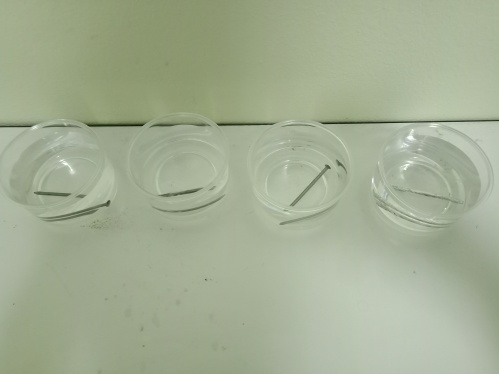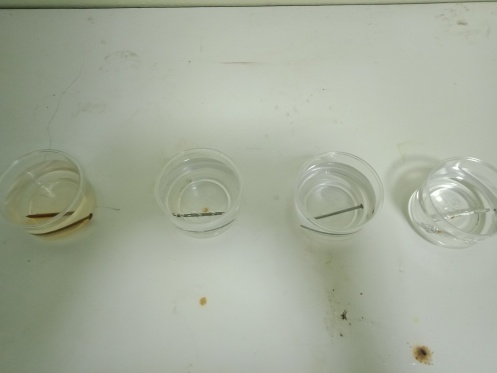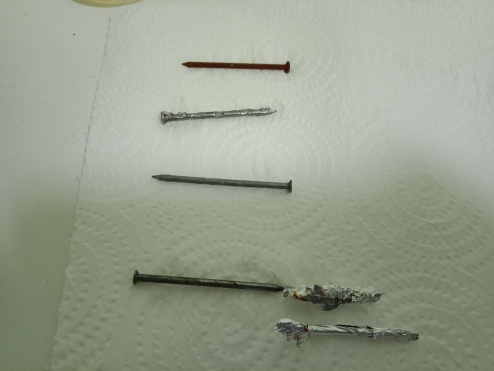Protecting Iron Nails from Rust
Rust is an iron oxide, a usually red oxide formed by the reaction of iron and oxygen in the presence of water or air moisture. Several forms of rust are distinguishable both visually and by spectroscopy, and form under different circumstances.
Given sufficient time, oxygen, and water, any iron mass will eventually convert entirely to rust and disintegrate. Surface rust is flaky and friable, and it provides no protection to the underlying iron, unlike the formation of patina on copper surfaces. Rusting is the common term for corrosion of iron and its alloys, such as steel. Many other metals undergo similar corrosion, but the resulting oxides are not commonly called rust.
Rust is another name for iron oxide, which occurs when iron or an alloy that contains iron, like steel, is exposed to oxygen and moisture for a long period of time. Over time, the oxygen combines with the metal at an atomic level, forming a new compound called an oxide and weakening the bonds of the metal itself. Although some people refer to rust generally as “oxidation”, that term is much more general; although rust forms when iron undergoes oxidation, not all oxidation forms rust. Only iron or alloys that contain iron can rust, but other metals can corrode in similar ways.
The main catalyst for the rusting process is water. Iron or steel structures might appear to be solid, but water molecules can penetrate the microscopic pits and cracks in any exposed metal. The hydrogen atoms present in water molecules can combine with other elements to form acids, which will eventually cause more metal to be exposed. If chloride ions are present, as is the case with saltwater, the corrosion is likely to occur more quickly. Meanwhile, the oxygen atoms combine with metallic atoms to form the destructive oxide compound. As the atoms combine, they weaken the metal, making the structure brittle and crumbly.
So here are the iron nails that I’m going to be using for the experiment.
One nail is covered in glue, the other is covered in WD-40 (if you don’t know what that is: it’s a penetrating oil and water-displacing spray). And the last one is covered in aluminum foil.

And I put them in cups of water and waited for 24 hours.

22 Hours Later:


I was really suprised that everyone one of them worked. The nail that was covered in Aluminum foil was completly dry. As you could see I used the method of stopping the water to touch the iron and it worked so well.


Oh I forgot you start later than our kids do here.
Nope, I’m not at school yet, but I will go to school soon…
Fascinating! Miss your posts! I hope school is going well for you!
Thank you 🙂
You are welcome.. Thank you buddy.. Keep writing
You have been very inventive though. 🙂
I’m starting to run out of them though 😦
I’m sorry for the late reply. Thanks for nominating, and you inspire me too. Good luck with your blog!
Hello, I have nominated you, if you like to write back you can, no compulsion. Chill and keep writing. Thank you for inspiring all.
https://melodiesphysics.wordpress.com/2018/08/26/tag-sunshine-blogger-award-nominated-by-akshaya-thulasi/
You’re very welcome. 🙂
Good to see you still managing to do experiments. 😀
Thank you for reading and for the comment. Really appreciated it 🙂
That’s a really good experiment. I did not expect so much rust to form on the unprotected nail in only 24 hours! Well demonstrated! 🙂